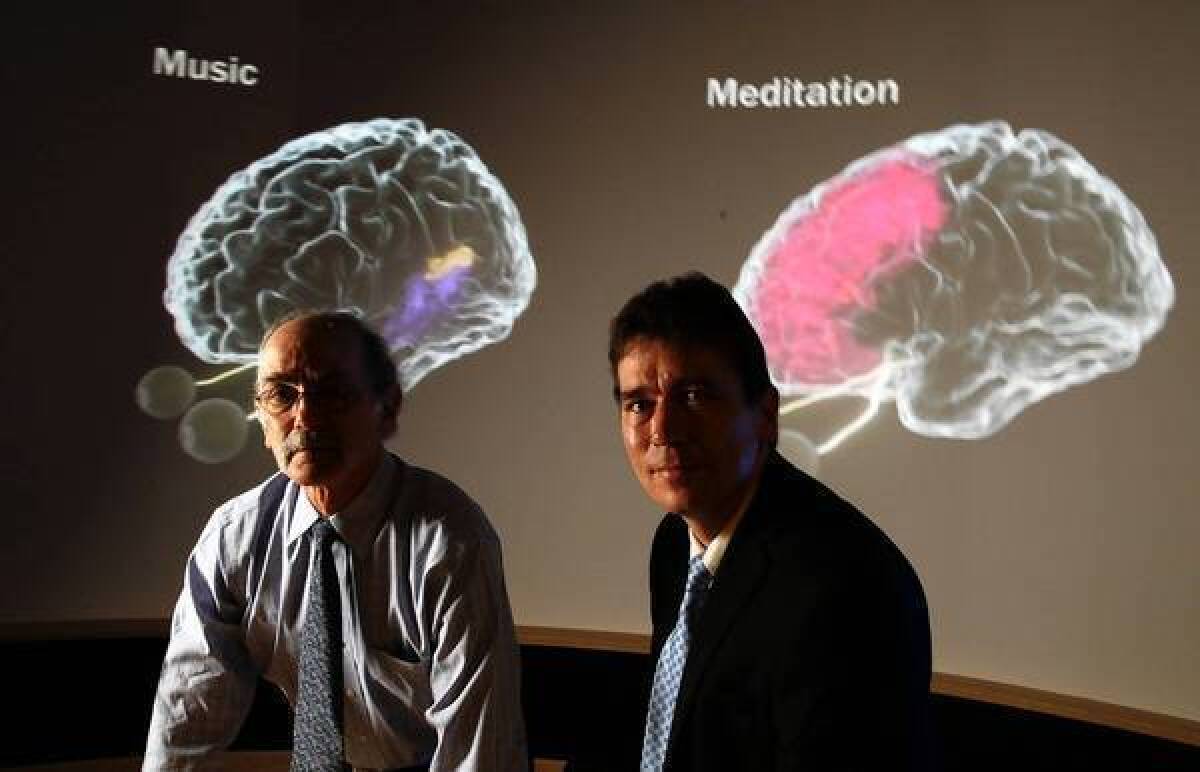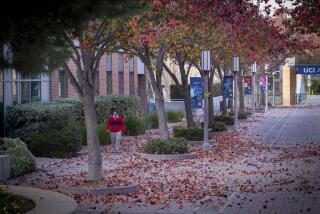USC steals 2 star brain researchers from UCLA

In a major case of academic poaching involving crosstown rivals, USC has lured away two prominent neuroscientists from UCLA with a promise to expand their internationally renowned lab that uses brain imaging techniques to study Alzheimer’s disease, schizophrenia, autism and other disorders.
Arthur Toga and Paul Thompson will move to the USC Keck School of Medicine campus next fall, along with scores of graduate students, postdoctoral fellows and staffers who now work at UCLA’s Laboratory of Neuro Imaging, known as LONI. In establishing a new institute at the USC campus in Boyle Heights, they will also move substantial government and private grants that fund the lab’s $12-million annual budget as well as some of the highly sophisticated equipment used to investigate the brain’s inner workings.
The new hires mark another chapter in a long Los Angeles rivalry in sports and, increasingly, in academic prestige. It also raises concerns about the ability of financially strapped public universities to fend off raids from deep-pocketed private colleges like USC.
DISCUSSION: Chat with reporters at 9 a.m.
Toga and Thompson said they do not think their departure from UC signifies a brain drain from the 10-campus University of California system, which has grappled with budget cuts over the last four years. They said USC has pursued them for years with offers of larger facilities, additional financial resources and the chance to hire more researchers. They also were impressed with how quickly private universities can make changes compared with state schools.
Scientists around the country said the move would further elevate USC, which recently has hired away professors and researchers from Caltech, Harvard and other prestigious institutions.
“It’s a feather in USC’s cap,” said Dr. Bruce Rosen, director of a biomedical imaging center at Massachusetts General Hospital in Boston. He described the Toga-Thompson group as perhaps the world’s premier lab when it comes to finding insights about the brain in massive amounts of data from scans and genetic tests.
The ability to expand at USC “seemed far greater than the opportunities” to do so at UCLA, said Toga, 60, the lab’s director. Their new Institute for Neuroimaging and Informatics will have its own customized building and will also have space at a USC facility at Marina del Rey.
The scientists did not divulge details of their new salaries and research funding but said they did not seek a counteroffer. “We did not want to play that game,” said Toga, who told UCLA officials of his plans Thursday.
According to a UC website of employee compensation, Toga was paid $1.06 million in 2011, including basic salary and extra money for research work. Thompson was listed at $421,150.
Thompson, 41, said that the main reason for the move was scientific, not financial, especially considering the opportunity to create an institute that blends engineering and medicine.
“USC has stepped up to the plate to do this,” Thompson said. “We’ve been incredibly impressed by the vision and sheer common sense of the people we’ve worked with and with the efficiency and the ease of getting things done.”
Toga said he did not want to disparage UCLA but said private schools “are often a little quicker on their feet.”
The move “will invigorate our activities considerably,” he said.
UCLA Chancellor Gene Block praised the accomplishments of the LONI scientists and expressed disappointment at their exit.
“I want to stress, though, that the exceptional drive and ingenuity of our faculty, staff and students and the quality of our research infrastructure ensures our continued strength, especially in the field of neuroscience,” he said in a statement. “The departure of one lab will not diminish our impact.”
John Mazziotta, UCLA’s neurology chairman and executive vice dean of its medical school, said he had known for months that Toga was talking to USC and other universities but that Toga had never divulged specifics to allow UCLA to make a counteroffer.
Mazziotta said he will try to retain eight of the faculty at the LONI lab, which he said will continue to operate along with about 100 other campus labs involved in various aspects of neurology and neuroscience.
“It’s definitely a loss,” he said. “I’d prefer this not to happen for sure. But UCLA still has unbelievable depth and range” in the discipline. Mazziotta said it would be wrong to portray the move as linked to state funding cuts because labs like this rely mainly on outside grants, clinical revenues and donations, not state tax dollars.
But public universities around the nation find it increasingly difficult to retain faculty targeted for recruitment by better-funded private schools, said Ronald Ehrenberg, director of the Cornell Higher Education Research Institute.
“This is a major problem for public higher education,” said Ehrenberg, an economist. Yet even affluent private schools like USC must be selective when deciding which expensive researchers to pursue, he added. “You can’t do a lot of this. But you can make a really big splash, especially when you a pick a field which is a field of the future — and certainly neuroscience is one,” he said.
USC president C.L. Max Nikias said his priority “is to recruit what I call transformative faculty. They are people who are well-established, they are the kings and queens of where they are.”
As for whether these hires are especially sweet, Nikias said: “We always compete with UCLA whether in athletics or for students or faculty. But I’m sure this will be noticed because it is from across town.”
He said USC has hired two dozen highly ranked academics in the past three years and wants more. That will be helped by USC’s overall fundraising campaign, which is on track to hit
$3 billion by summer, he said. The ultimate goal is $6 billion by 2018.
Toga and Thompson are at the forefront of a field that seeks to understand the brain by bringing together huge amounts of data from advanced imaging scanners, genetic tests, biological samples and clinical exams. It’s the type of research President Obama had in mind when he outlined an ambitious plan for scientists to map the brain in April.
One of LONI’s major efforts involves the Human Connectome Project, which aims to map the 100 billion neurons in the human brain and trace the trillions of connections between them. The scope of the effort has been compared to the Human Genome Project.
Since 2009, Thompson has played a leading role in one of the largest brain imaging studies in the world. Last year, the ENIGMA Project identified genes involved in brain changes that accompany Alzheimer’s disease, and researchers hope to turn up more biomarkers that offer noninvasive ways to understand and treat this and other illnesses.
Their research is funded by multimillion-dollar grants from the National Institutes of Health, as well as by funds from the European Union and private sources.
“It’s impossible to use hyperbole when you speak of LONI — they’re so outstanding,” said Dr. Michael Weiner, an Alzheimer’s expert who is a professor of radiology and biomedical imaging at UC San Francisco. He called the move “great news for USC.”
On-and-off discussions about the move began about three years ago, and USC demonstrated its commitment to brain imaging research last fall by hiring noted Caltech expert Scott Fraser, said USC provost Elizabeth Garrett.
Other than saying they will have more resources and faculty than at UCLA, Garrett declined to discuss financial details and sources of Toga’s and Thompson’s packages.
Two years ago, as the recession battered public higher education, UC San Diego unsuccessfully tried to keep three star scientists but was outbid by Rice University in Texas, which was shopping for leaders in cancer research. The private Houston university offered 40% pay raises. The move alarmed UC officials, but administrators say there has not been any significant brain drain; some faculty members have left, even while UC hired others.
The large size of this move may prove alarming, however. Toga and Thompson estimated that about 85 of their 105 affiliated staff will follow them to USC.
While some LONI lab members said it might feel odd at first to work at rival USC, postdoctoral researcher Neda Jahanshad predicted that most will move with the team.
“We love the research we are doing,” she said. “This is an opportunity.”








